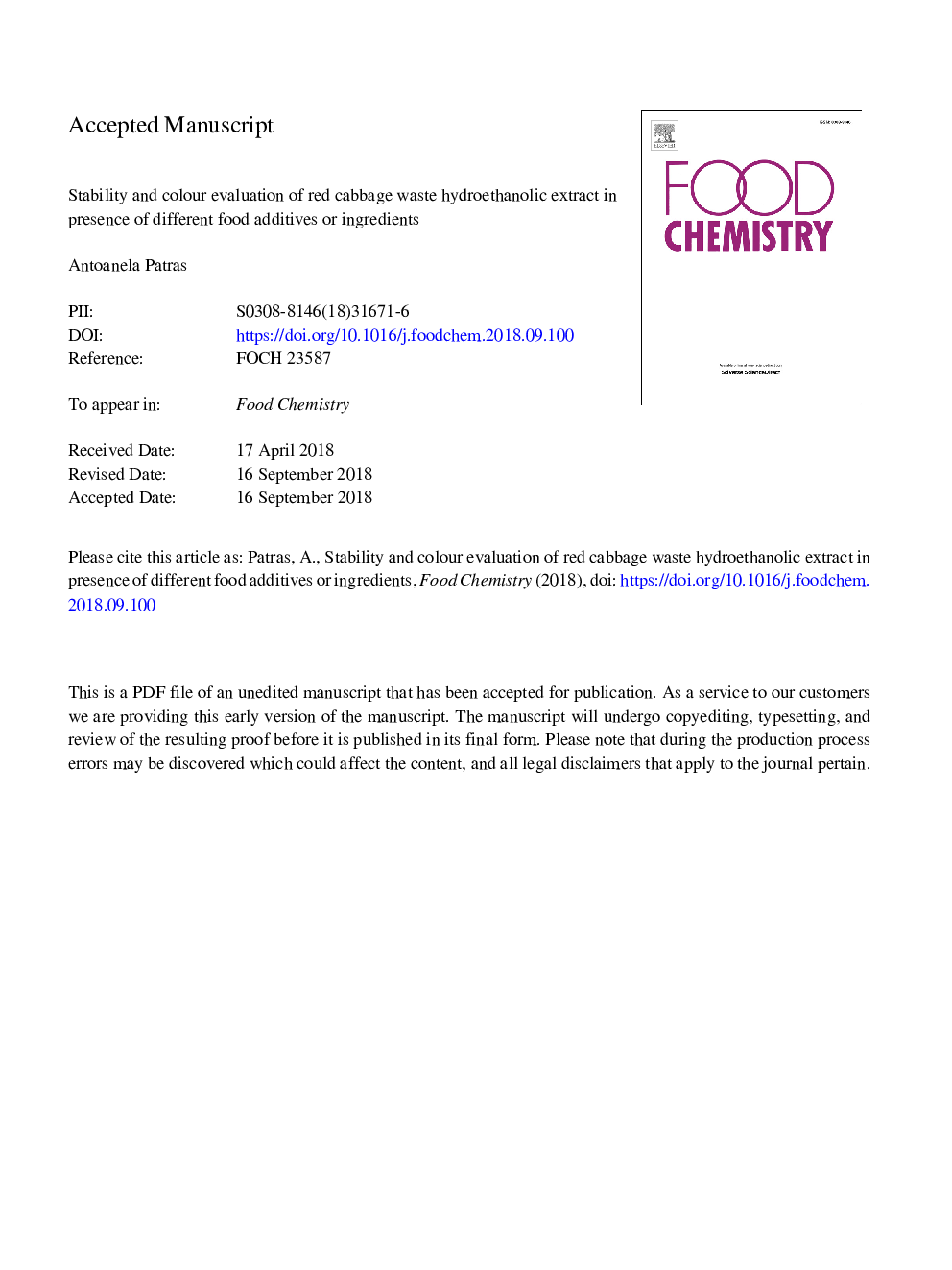| Article ID | Journal | Published Year | Pages | File Type |
|---|---|---|---|---|
| 11027456 | Food Chemistry | 2019 | 30 Pages |
Abstract
Red cabbage waste is a valuable source of anthocyanins which may be used as natural food dye. Excepting the colouring agents, food/beverage contains compounds from the matrix or other additives/ingredients. Present study reveals the influences of nineteen food additives/ingredients on the stability, colour parameters and radical scavenging activity during 20â¯weeks of storage of red cabbage waste hydroethanolic extract (initial pHâ¯=â¯6.31) under aerobic atmosphere, in the dark, at 4â¯Â°C. At studied concentration (0.2%), most important changes were produced by tartaric and citric acids: decrease of monomeric anthocyanins content, lightness, radical scavenging activity, and increase of polymeric colour, browning and degradation indices, chroma and red colour parameter, absolute value of blue colour parameter and hue angle, inducing very important overall colourimetric differences. Similar influences, but much attenuated, proved ascorbic and benzoic acids. During storage, the untreated extracts revealed a very high stability, and also mostly of treated extracts (especially with sugars).
Keywords
Related Topics
Physical Sciences and Engineering
Chemistry
Analytical Chemistry
Authors
Antoanela Patras,
